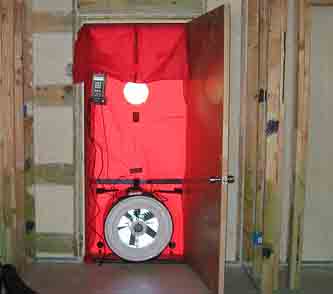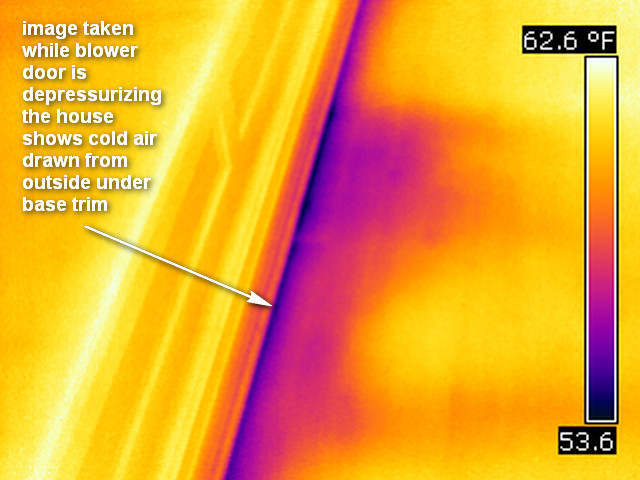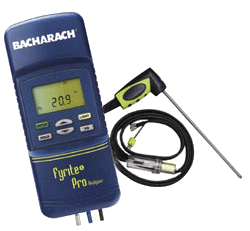Home Energy Audits
So you've decided that you want to get a handle on your home's energy usage, but you're not sure where to start. The field of home performance is growing and there are many ways to reduce your energy bills. But where to begin? What are the easiest things to do to yield the most savings? We can help you get started with a report that details actions you can take to reduce your home's energy usage, starting with the "low hanging fruit" -- stuff that's easy to do and yields the best bang for your buck.
Energy (electric, gas, oil) is the largest cost of owning a home and it could be argued that energy costs will rise in the coming years. We offer an energy audit followed by a written report describing possible energy efficiency and energy conservation measures available, including simple actions any homeowner can take to reduce energy costs.
Most companies offering home energy audits provide a free energy audit as a loss leader to promote their energy retrofit services, which can be expensive, even after rebates. There is a saying in construction: If you're a hammer, then everything's a nail. This means that if a company sells insulation, then insulation will be the solution to reduce your energy costs. The same could be said for heating service companies and window installers. We do not sell energy upgrades -- or anything -- this is strictly a consulting service. Therefore we have no agenda other than to give you an unbiased road map of what can be done to lower you bills.
Included in the service is a report that is custom written for your house. So rather than suffer through a sales pitch for windows, insulation, and heating/cooling equipment that you may or may not need, we can report on the things that would most likely benefit your house. We can also be available to oversee any energy retrofits you decide to have installed to verify that work has been done safely and correctly. Pricing is determined based upon the location and size of your home. Give us a call for more information.
Generally energy conservation measures fall under the following headings:
- Heating / cooling opportunities - they account for the biggest energy costs
- Insulation
- Air sealing. Simple leaks can sap home energy efficiency by 5 to 30% a year, according to the U.S. Department of Energy.
- Electrical appliances, lighting, and plug loads

| 1/10 ACH Nat | a good target for building a tight house |
| 1/3 ACH Nat | modern day building code limit |
| 1 - 2 ACH Nat | leaky |
| more than 2 ACH Nat | very leaky house |
We use an infrared camera to identify the areas where air leakage is occurring and insulation may be deficient. Infrared cameras see heat instead of light. Warmer areas are lighter colors and colder areas are darker colors. Here are some examples:



Carbon Monoxide (CO): Elevated CO means that the fuel to air mixture is not set at the most efficient -- you're likely wasting fuel. HIGHLY elevated CO is a health risk to the occupants and a serious health hazard if backdrafting occurs. Note that many professional" heating technicians do not use instruments to measure these settings, but rather, set things up "by eye", if at all. We have routinely found high CO levels on "well-maintained" heating equipment.
Draft: This measures how well the combustion by-products are moving up and out the chimney, where we want them to go. Weak draft is a health risk. Backdrafting (gases backing up into the house) is a health hazard.
Stack temperature: Excessively high or low temperature of combustion gases can indicate problems with combustion efficiency.
- BPI-certified Building Analyst Building Performance Institute has created certifications that have become the industry standard for all home performance contractors. The Building Analyst certification is conferred upon applicants who can demonstrate thorough understanding of how building shells are constructed, how they leak air, how the should be insulated, and how heating equipment should perform safely.
- Certified HERS Rater Building departments in Long Island have outsourced their overview of the energy efficiency aspects that are present in modern-day building codes for new construction. HERS raters work with builders to assure that new construction meets the requirements of energy efficiency for the 21st century.
- Certified Indoor Environmentalist The American Council for Accredited Certification offers this 3rd-party industry standard to those individuals who have demonstrated competence and experience in issues surrounding indoor air quality, its causes, pathways, and improvements.
- Level I Infrared Thermographer Culmination of a standard week-long course in theory and application of infrared camera usage and interpretation.

